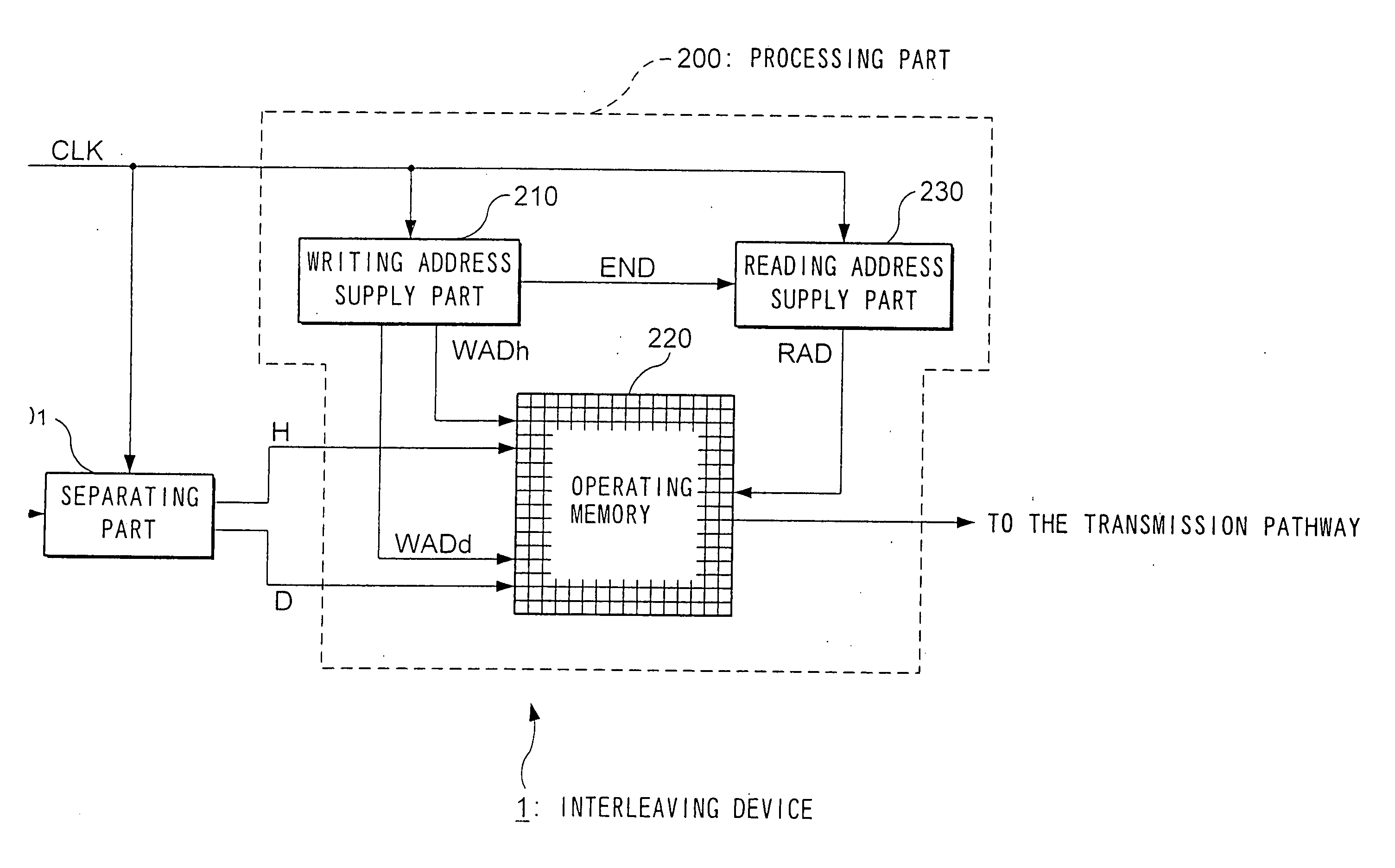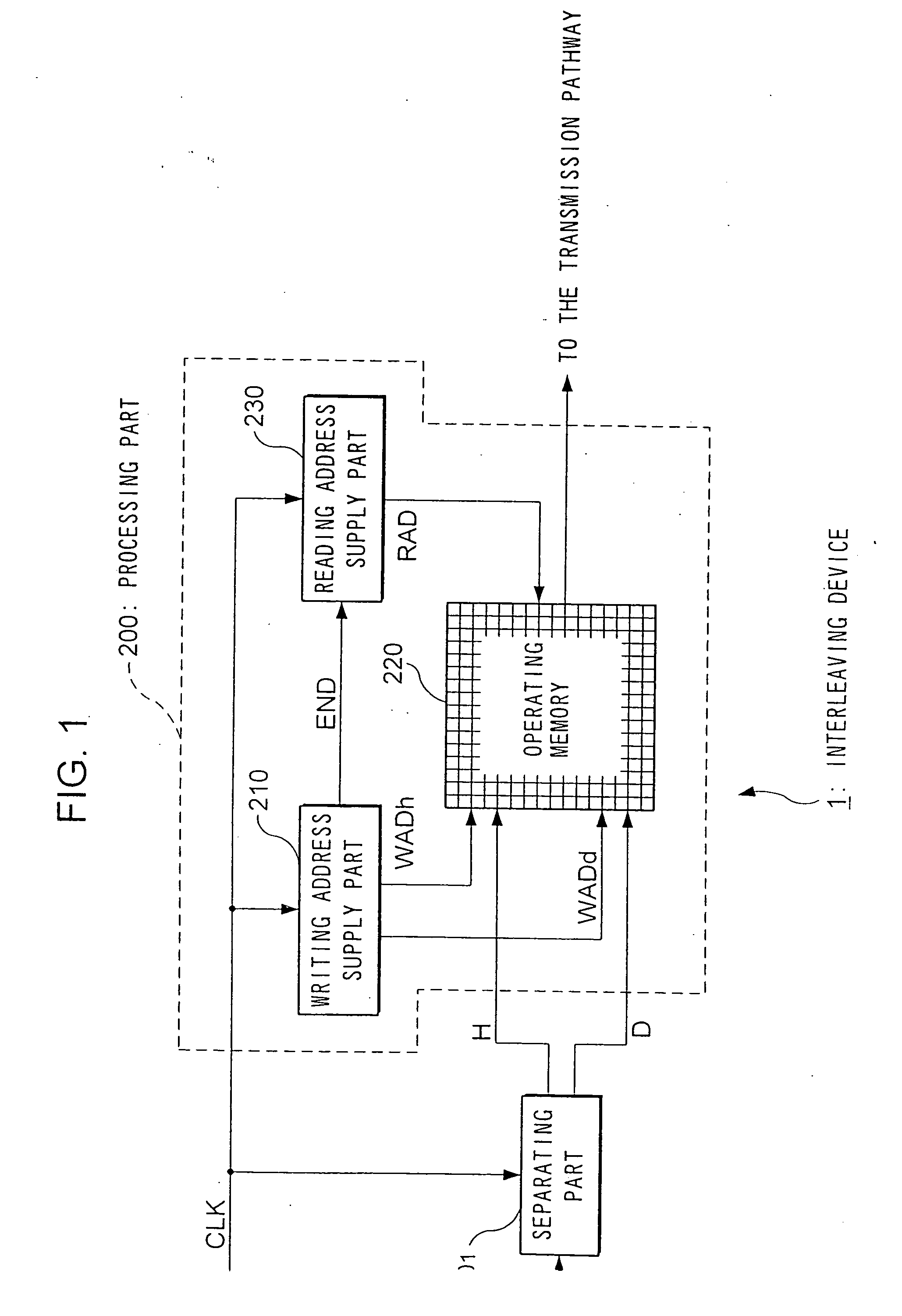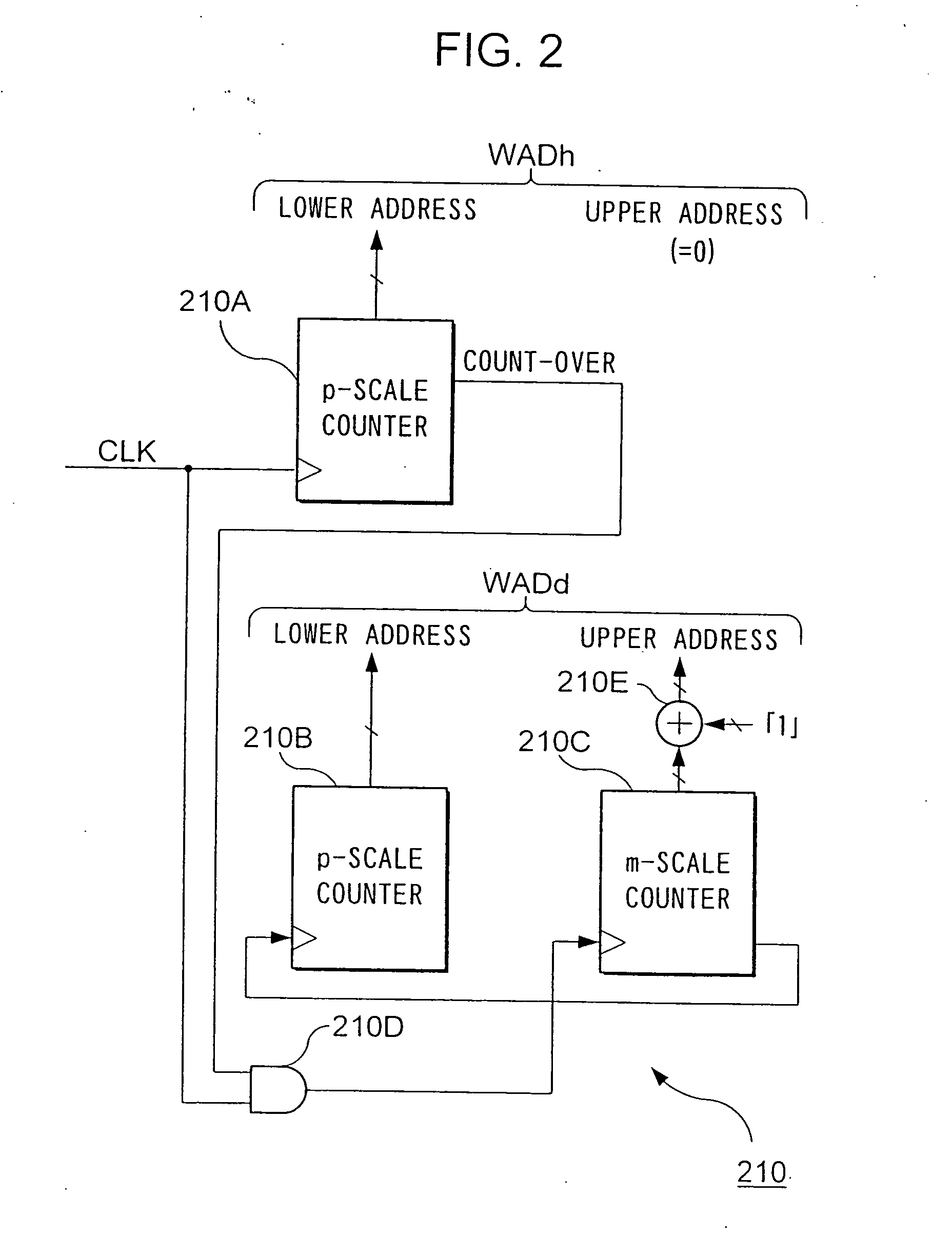Method and device for interleaving and method and device for de-interleaving
a technology of interleaving and interleaving devices, applied in the direction of channel coding adaptation, instrumentation, signal error generation in digital data, etc., can solve the problems of low average code error rate, easy burst error generation, and low interleaving error ra
- Summary
- Abstract
- Description
- Claims
- Application Information
AI Technical Summary
Benefits of technology
Problems solved by technology
Method used
Image
Examples
first embodiment
A. First Embodiment
(1) The Interleaving Device
FIG. 1 is a block diagram showing a configuration of an interleaving device 1 provided to a device on the transmission side of a digital telecommunications system which is the first embodiment of this invention.
As shown in FIG. 1, this interleaving device comprises a separating part 100, and a processing part 200.
The frames that are to be transmitted to the receiving side device are sequentially transmitted to the interleaving device 1. Each frame is a bit sequence formed from a plurality of bits, and these bits are sequentially supplied to the interleaving device 1 synchronously with a bit clock CLK.
When the data forming the frames are divided by category, it is possible to distinguish between the header H and the data D which follows it.
In the example described below, the header H is formed from p bits, and the data D is formed from m×p bits.
Furthermore, the header H undergoes error correction encoding. By contrast, the dat...
third embodiment
C. Third Embodiment
In the first and second embodiments, the frame to be transmitted is separated into the part that has undergone error correction encoding and the part that has not undergone error correction encoding, and interleaving is performed by scattering and arranging the bits making up the former across the entire range of the bit sequence of the latter.
Embodiments of interleaving in the present invention are not limited to the above.
For example, there is the case where data that has not undergone error correction encoding contain types of data strings that, because of their nature, should undergo the randomization effect of interleaving.
The present embodiment assumes this type of case. In the present embodiment, the data that has not undergone error correction encoding is divided into a part for which the randomization effect of interleaving is desirable, and a part for which it is not desirable, and interleaving is performed by scattering and arranging the bits tha...
PUM
 Login to View More
Login to View More Abstract
Description
Claims
Application Information
 Login to View More
Login to View More - R&D
- Intellectual Property
- Life Sciences
- Materials
- Tech Scout
- Unparalleled Data Quality
- Higher Quality Content
- 60% Fewer Hallucinations
Browse by: Latest US Patents, China's latest patents, Technical Efficacy Thesaurus, Application Domain, Technology Topic, Popular Technical Reports.
© 2025 PatSnap. All rights reserved.Legal|Privacy policy|Modern Slavery Act Transparency Statement|Sitemap|About US| Contact US: help@patsnap.com



